Morioka: 12 Places to Visit, Local Food, Hotels, and Travel Tips

Morioka, a city in northeastern Japan, is home to Western-style buildings from the Meiji period (1869-1912) and other historical sites that make it an irresistible destination. We explain how to get to Morioka and introduce the best places to visit in the city along with travel tips.
Morioka Travel Guide
Morioka: History and Features
Weather in Morioka Throughout the Year
Morioka Festivals
How to Get to Morioka
12 Places to Visit in Morioka
Local Food to Try in Morioka
Hotels in Morioka
Morioka: History and Features
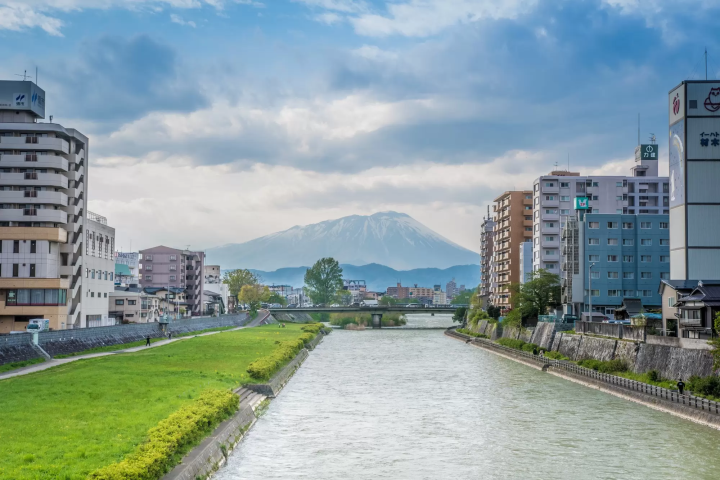
Picture courtesy of Pixta
Morioka is the capital city of Iwate Prefecture. Whether you want to enjoy cherry blossoms and autumn leaves, appreciate historical sites, or indulge in delicious Iwate cuisine, Morioka can meet all your needs at once.
The city retains several Western-style buildings from the Meiji period (1868-1912) and other historical sites that make it an excellent choice for a leisurely day trip.
Additionally, Morioka City is home to memorial museums dedicated to famous literary figures, including Kenji Miyazawa and Takuboku Ishikawa, who were born in or near Morioka. You'll have plenty of opportunities to learn about their backgrounds and stories!
This article aims to provide a comprehensive introduction to this charming city, including information on Morioka festivals, transportation, attractions, cuisine, and accommodations, all of which can be found below. Allow us to guide you as we explore Morioka City in Iwate Prefecture!
Morioka Weather Throughout the Year

Picture courtesy of Pixta
If you're planning a trip to Morioka, understanding the local climate is essential to packing proper clothing without any regrets.
December to March: During this period, the average temperature in Morioka City is around 0 degrees Celsius, with occasional light snowfall. Therefore, if you're traveling to Morioka during this time, pay special attention to staying warm.
April to June: The weather begins to warm up slightly, although average temperatures remain below 20 degrees Celsius. Only during the daytime in June does the temperature rise slightly, reaching around 24 degrees Celsius.
July to September: The average temperature ranges from 25 to 28 degrees Celsius. Although it's summer, it doesn't feel excessively hot, making it a suitable time for travel. However, sun protection is still necessary!
October to November: Temperatures begin to drop, with October's average at around 12 degrees Celsius and November's around 6 degrees Celsius. This period coincides with the autumn foliage season in Iwate Prefecture. If you want to enjoy the beautiful autumn leaves, be sure to seize the opportunity.
Morioka Festivals

Picture courtesy of Pixta
Various festivals are held annually throughout Japan, and Morioka City is no exception. The Sansha Matsuri in Morioka is an annual tradition that originates from the Sansha dance of the Edo period. It takes place from August 1st to the 4th.
The festival began as a way to drive away evil spirits from Morioka Castle. Locals made wishes at Mitsuishi Shrine, hoping that the deity would quell the malevolent spirits upon hearing their prayers. After successfully calming the spirits, the residents celebrated by performing the Sansha dance.
If you love Japanese festivals, consider planning your visit to Morioka City specifically during August 1st to 4th to witness the lively Sansha Matsuri!
How to Get to Morioka
The best ways to travel to Morioka are by plane and Shinkansen (bullet train).
By Plane

Picture courtesy of Pixta
The nearest airport to Morioka is Iwate Hanamaki Airport, which has flight connections to Tokyo, Osaka, and other major airports.
From Hanamaki Airport to Morioka City, you can catch a shuttle bus that takes about 45 minutes.
It is recommended to purchase the JR East Rail Pass (Tohoku Region), which allows you to use the Shinkansen to visit other popular destinations in Tohoku, such as Ginzan Onsen in Yamagata and Lake Tazawa in Akita. Additionally, you can ride the mentioned shuttle buses for free by showing the rail pass!
By Shinkansen

If you're traveling to Morioka from other prefectures in Japan, you can take the Shinkansen!
If you depart from Tokyo, the journey takes about 1 hour and 10 minutes to reach Morioka Station. If you're coming from Sendai, arriving in Morioka only takes about 40 minutes.
Local Transportation in Morioka City
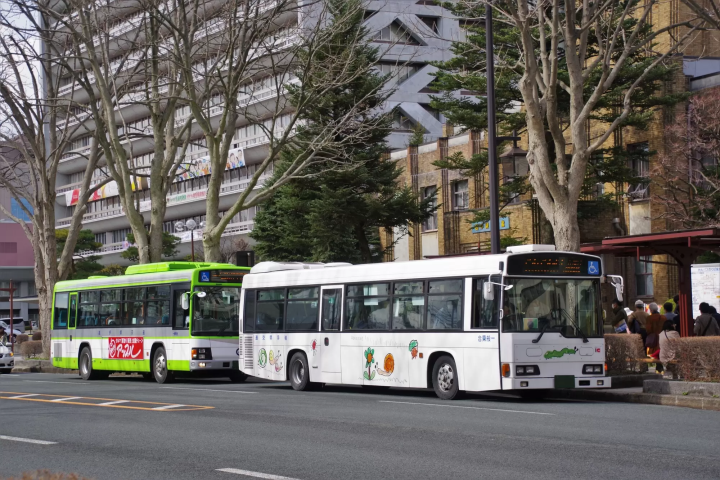
Picture courtesy of Pixta
Most of the sights in Morioka are within walking distance, making it ideal to visit on foot. However, if you prefer not to walk too much, you can consider taking the Morioka central loop bus, known as the Dendenmushi (Snail Bus), to easily visit the attractions.
A one-day pass for the Dendenmushi costs 350 yen for adults and 180 yen for children. You can purchase tickets at the bus information center in front of Morioka Station or the ticket vending machine at the Morioka Bus Center.
For a detailed schedule of the Dendenmushi, please refer to the official website.
Places to Visit in Morioka
The following 12 tourist destinations begin with the nearest one to the station, which is the Malios observation room. Note that the Morioka Handcrafts Village and Koiwai Farm are farther from the station. If you have time, you might want to consider including these two attractions in your itinerary!
1. Malios Observation Room

Picture courtesy of Pixta
The Malios Observation Room is located at the top of the Malios building, just a 3-minute walk from the west exit of Morioka Station. This 92-meter-tall building is the tallest skyscraper in the Tohoku region.
Admission to the observation deck is free, allowing visitors to enjoy panoramic views of Morioka City. On clear days, you can simultaneously see the Kitakami River, Shizukuishi River, and Mount Iwate.
Hotels near Marios Observatory
2. Kaiun Bridge

Picture courtesy of Pixta
The Kaiun Bridge is also known by another nickname, the Nido-Naki-Bashi (Bridge of Two Cries). This name originates from people who would cry while crossing the bridge due to unfamiliarity with the new environment after being transferred to Morioka.
However, as time passed and they grew more attached to Morioka, they would cry again upon leaving, but this time out of nostalgia and reluctance to part.
Hotels near Kaiunbashi
3. Morioka Castle Ruins Park (Iwate Park)

Picture courtesy of Pixta
Morioka Castle Ruins Park was built in 1597 as the residence of the Nanbu clan, the lords of the Morioka domain.
The ruins are designated as a national historic site and recognized as one of “Japan's 100 famous castles" and one of the "100 selected historical parks in Japan." Morioka Castle Ruins Park also has monuments commemorating renowned poets Takuboku Ishikawa and Kenji Miyazawa.

Picture courtesy of Pixta
Additionally, it attracts numerous visitors every spring and autumn to enjoy cherry blossoms and foliage.
Hotels near Morioka Castle Ruins Park (Iwate Park)
4. Sakurayama Shrine

Located within Morioka Castle Ruins Park, Sakurayama Shrine was established in 1749 as the guardian shrine of the Nanbu clan. Every May, the shrine hosts the Reitaisai (annual festival), during which you can see a parade featuring samurai in armor.
Inside the shrine is a famous sword with a history dating back to Japan's Northern and Southern Courts, which is even designated as a nationally designated important cultural property.
Hotels near Sakurayama Shrine
5. Ishiwari-zakura (Stone-Cutting Cherry Blossom)

Picture courtesy of Pixta
The Ishiwari-zakura (Stone-Cutting Cherry Blossom) is a Edo Higan cherry tree that grows in the crack of a massive granite boulder. Located in the courtyard of the Morioka District Court, this tree is estimated to be around 350 to 400 years old, with a trunk circumference of 4.3 meters and a height of 10 meters.
The Ishiwari Zakura is designated a "National Natural Monument of Japan." If you visit Morioka City in the spring, don't miss this miraculous cherry tree.
Hotels near Ishiwarizakura
6. Iwate Bank Red Brick Building

Picture courtesy of Pixta
The Iwate Bank Red Brick Building was designed by architect Kingo Tatsuno in collaboration with the Manji Kasai Architectural Firm. Originally the headquarters of Morioka Bank, construction began in 1911.
The combination of brick and white granite exudes a rich vintage atmosphere.
Inside the Iwate Bank Red Brick Building, you can see restored rooms such as the former conference room and counter of Morioka Bank. It's a great opportunity to learn about the history of Morioka City and Iwate Bank.
Hotels near Iwate Bank Red Brick Building
7. Morioka Takuboku and Kenji Museum

Picture courtesy of Pixta
The Morioka Takuboku and Kenji Museum showcases the works and related materials of Japanese poet Takuboku Ishikawa and Japanese writer of children's literature Kenji Miyazawa. Both of them spent part of their youth in Morioka City.
The building features a blend of German Romanesque architectural style, making it a must-visit for those who appreciate retro architecture or are interested in Ishikawa Takuboku and Miyazawa Kenji. If you become hungry, you can also enjoy afternoon tea at the attached cafe.
Hotels near Morioka Takuboku/Kenji Seishunkan
8. Konyamachi Banya

Picture courtesy of Pixta
Konyamachi Banya was built in 1913 as the office of the fire department. After restoration in 2005, it was opened to the public as a cultural facility. Notable features of the building include the former fire department's hexagonal watchtower, red eaves, and gray exterior.
Konyamachi Banya provides visitors with a deeper understanding of the area's historical prosperity. Various activities and handicrafts on display can also be found here, making it an ideal place to experience the local culture of Morioka.
Hotels near Konyamachi Banya
9. Morioka Hachimangu Shrine

Morioka Hachimangu Shrine is the largest shrine in Iwate Prefecture, originally built in 1680 by Nanbu Shigenobu. It enshrines deities associated with commerce, industry, and education.
The shrine is characterized by its vermilion-colored main hall adorned with intricate carvings. During the New Year and the Morioka Autumn Festival, many locals visit Morioka Hachimangu Shrine, making it a spiritual center for the city.
Hotels near Morioka Hachimangu Shrine
10. Iwate Museum of Art

Picture courtesy of Pixta
The Iwate Museum of Art opened in October 2001 and showcases works by many local artists, including Kitaro Kenjiro, Shunsuke Matsumoto, and Yasutake Funakoshi. The museum frequently hosts a variety of themed exhibitions. You can also find first-edition books, fairy tales, and poetry collections by Kenji Miyazawa.
Admission to the museum is 410 yen for adults, 310 yen for students, and free for junior high school students and younger (exhibition content changes regularly).
Hotels near Iwate Prefectural Museum of Art
11. Morioka Handcrafts Village

Picture courtesy of Pixta
Morioka Handcrafts Village is a fantastic place to learn about traditional Morioka crafts. The village features 14 workshops, including those specializing in Nanbu ironware, Nanbu senbei (rice crackers), indigo dyeing, and Morioka reimen (cold noodles).
Visitors can observe the techniques of skilled artisans and even participate in hands-on experiences! Whether you're interested in making cold noodles or baking senbei, you can complete these tasks with your own hands.
Hotels near Morioka Handcraft Village
12. Koiwai Farm

Picture courtesy of Pixta
Koiwai Farm was established in 1891 and derives its name from the first characters of its three founders: Yoshimasa Ono, Yasunobu Iwasaki, and Masaru Inoue. Covering approximately 3,000 hectares, it is the largest privately owned farm in Japan.
At Koiwai Farm, you can interact closely with adorable animals. You can also enjoy beautiful cherry blossoms and autumn leaves in spring and autumn! Of course, don't forget to try the farm-fresh milk ice cream and yogurt made from their dairy products!
Tip: After purchasing your ticket, be sure not to throw it away! You'll need the QR code on the ticket to access the dairy barn.
Lpcal Food to Try in Morioka
Many people may have heard of the "Three Great Noodles of Morioka"!
These three noodles are referred to as Morioka reimen (cold noodles), Morioka jajamen (noodles with black bean sauce), and Morioka wanko soba (soba served in small bowls). There are many restaurants in Morioka where you can enjoy these three great noodle dishes. We introduce a few popular spots below.
Morioka Reimen Restaurant: Yakiniku & Reimen Seiroukaku

Regarding food at Morioka Station, you can't miss the famous Yakiniku & Reimen Seiroukaku. The signature cold noodles are made with beef bones and shank, resulting in chewy and elastic noodles that are simply irresistible.
In addition to the signature cold noodles, Seiroukaku also offers a variety of yakiniku (grilled meat) options, making it highly recommended to try a bit of everything. However, be aware that Seiroukaku is very popular during meal times, so it's a good idea to arrive early to grab a number!
Morioka Reimen Restaurant: Pyon Pyon Sha Morioka Station Front

Picture courtesy of PR TIMES
In addition to Seiroukaku, I recommend another restaurant near Morioka Station called "Pyon Pyon Sha Morioka Station Front." They also offer a delightful combination of cold noodles and Iwate yakiniku.
The selection of premium meats, including special wagyu steaks and Iwate short-horn beef, sets this place apart, ensuring a truly satisfying dining experience.
Morioka Jajamen Restaurant: Hakuryu

Hakuryu was established in 1953 and is considered one of the classic jajamen shops in Morioka City. Thejajamen originated in a pre-World War II food stall and has since evolved by blending with local flavors.
You can customize your dish with additional condiments like chili oil and garlic paste according to your taste. After finishing your noodles, don't rush to leave—ask the staff to add an egg to your bowl, transforming it into a comforting "egg soup." This combination of savory jajamen followed by a gentle egg soup is truly a perfect match!
Morioka Wanko Soba Restaurant: Soba Place Higashiya

Picture courtesy of Pixta
Soba Place Higashiya was established in 1907 and is renowned in Morioka for its wanko soba. When enjoying wanko soba here, the servers will continuously pour bite-sized portions of soba into your bowl until you are satisfied.
Throughout the dining experience, the staff cheerfully shouts encouragement, creating a lively and engaging atmosphere. This makes for a memorable dining experience that you won’t forget when visiting Soba Place Higashiya.
Morioka Fukuda Bakery

Picture courtesy of Pixta
Fukuda Bakery was established in 1948 and is a well-known, longstanding bakery in Morioka. It is famous for its wide variety of long stuffed bread called koppepan. They offer around 60 flavors, with popular combinations including red bean cream, peanut butter, and matcha red bean.
Fukuda Bakery's breads are fluffy and soft, with a delicate filling that doesn’t feel overwhelming. You can visit their main store, located about a 15-minute walk from Morioka Station in Nagatacho, to enjoy this Morioka delicacy. You can also find their bread at the souvenir shop Iwate Tetoteto within Morioka Station!

Picture courtesy of Rakuten
However, the bread has a short shelf life, making it less convenient as a souvenir. Fukuda Bakery has collaborated with a cookie factory to develop a red bean cream-filled cookie to address this. The subtle aroma of red bean cream and the crispy cornflakes in the filling received great acclaim as soon as it hit the market. In addition to the classic red bean cream flavor, there is also a jam cream flavor. It's worth trying both!
Hotels in Morioka
Read on to learn three quality hotels located right in front of Morioka Station, along with a popular Morioka hot spring inn for you to consider based on your needs.
Hotel Metropolitan Morioka
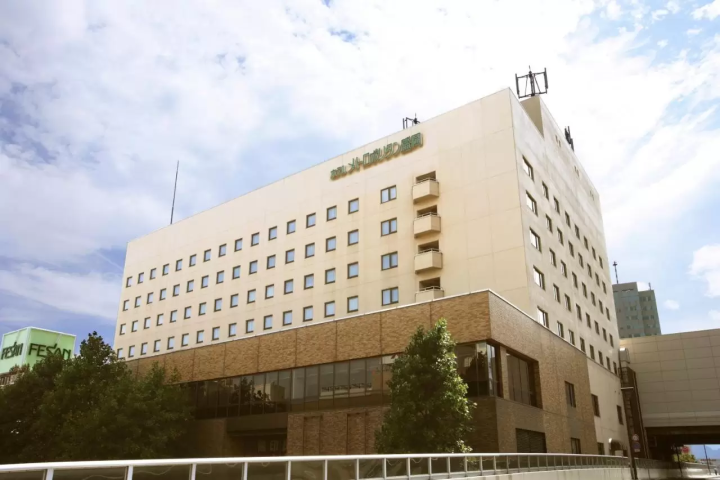
Picture courtesy of Booking.com
Hotel Metropolitan Morioka is conveniently located next to Morioka Station, making it easy to access nearby shopping centers and restaurants. One of the hotel's highlights is its fusion breakfast, which combines Japanese and Western styles.
Additionally, the hotel offers a free bicycle rental service, allowing guests to explore Morioka City at their leisure.

Picture courtesy of Booking.com
The guest rooms at Hotel Metropolitan Morioka are equipped with flat-screen TVs, refrigerators, private bathrooms, and a full range of toiletries and hair dryers. If you're hungry and don't want to venture far for a meal, the hotel features a Chinese restaurant called JUEN, where you can quickly enjoy delicious dishes.
Richmond Hotel Morioka Ekimae

Picture courtesy of Booking.com
Just a 3-minute walk from Morioka Station, Richmond Hotel Morioka Ekimae offers a variety of amenities, including face masks and skincare products. The lobby features a relaxing area with free beverages, allowing you to unwind with hot tea upon arrival.

Picture courtesy of Booking.com
In addition to the comfort of the rooms, the hotel offers a buffet breakfast and is conveniently located near popular attractions such as the Morioka Castle Ruins, making it an excellent choice for accommodation during your visit to Morioka.
Toyoko Inn Morioka Ekimae
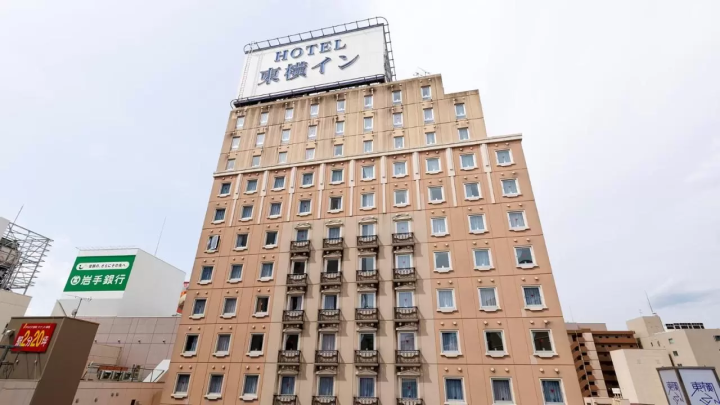
Picture courtesy of Booking.com
Toyoko Inn Morioka Ekimae is conveniently located in front of Morioka Station and offers affordable rates, making it a popular choice among business travelers. The area around the hotel features many local restaurants and shops, making it easy to sample Morioka's culinary delights.

Picture courtesy of Booking.com
The hotel rooms are simple, clean, and tidy, perfectly suited for short stays. The hotel also offers a complimentary breakfast with Japanese and Western options.
Morioka Onsen Aishinkan
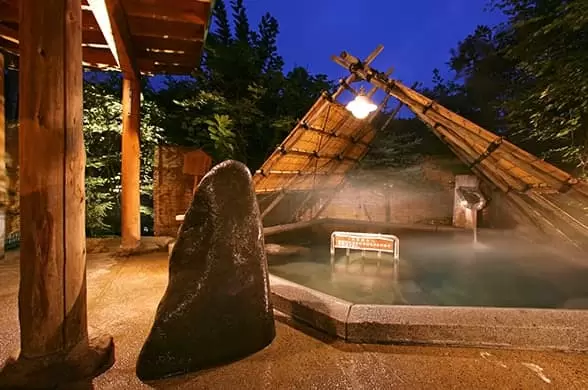
Picture courtesy of Booking.com
In addition to the three hotels mentioned above, I recommend staying at Morioka Onsen Aishinkan, located in the western part of the city. This area is home to an ancient hot spring district with a history of about 960 years, easily accessible by a 30-minute bus ride from Morioka Station.
Aishinkan features a unique 120 cm deep-standing hot spring and hinoki (cypress) baths, making the hot spring experience even more enjoyable. Interestingly, this location was also featured in the popular Japanese drama "The Bride of the Inn."

Picture courtesy of Booking.com
The rooms offer views of the nearby Gosho Lake, providing both comfort and serene scenery that enhances your stay. The inn also offers an all-you-can-eat dinner option, allowing you to savor various Iwate's culinary delights.
Morioka Shopping Destination: FES'AN Shopping Mall

Picture courtesy of Pixta
Lastly, we recommend visiting FES'AN, located within Morioka Station. It features 160 shops and offers a wide range of products, including fashion, household goods, beauty items, and dining options.
You can also find various Iwate souvenirs, making it an ideal spot for last-minute shopping before your departure. Additionally, the aforementioned Hakuryu jajamen restaurant has a branch on the first floor of FES"AN. If you don’t have time to visit the main store, you can still enjoy delicious Morioka jajamen here!
Hotels near fezan
Enjoy Exploring Morioka
This concludes the travel information about Morioka City in Iwate Prefecture. Whether you want to indulge in delicious food or explore historical sites, Morioka is a fantastic choice.
The weather in Iwate is quite pleasant, making it ideal for strolls around the city. We highly recommend planning a two-day, one-night trip to fully experience the charm of this captivating city!





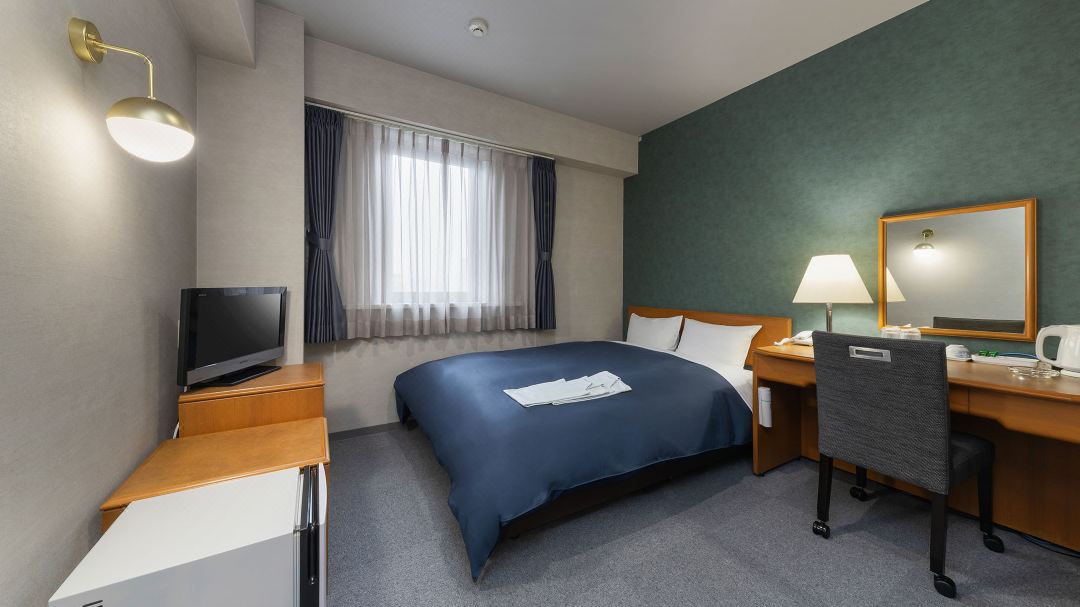
























































![[Corporate Visit List] Near Kansai Airport! Discover Japan’s Technology and Business Philosophy through Industrial Tourism](https://resources.matcha-jp.com/resize/720x2000/2024/12/13-215168.webp)
![["Secret Beauty: The Complete Works of Komura Setsutei" ~ March 1, 2026] "Abeno Harukas Art Museum"](https://resources.matcha-jp.com/resize/720x2000/2026/01/09-255274.webp)